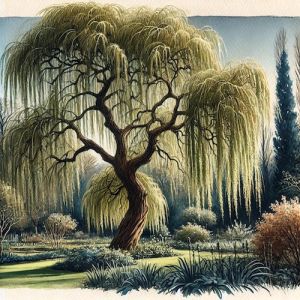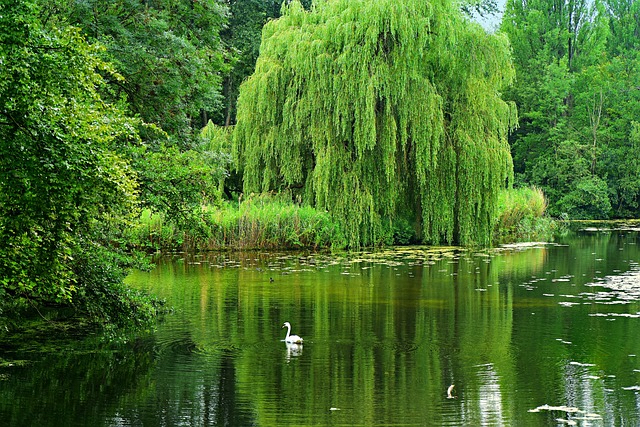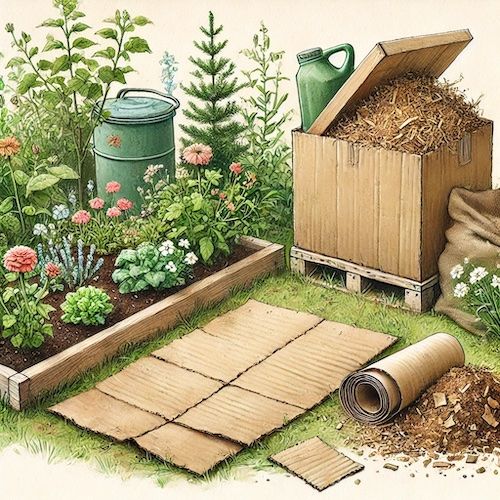The Beautiful Water Lover
Introduction to Willow Trees
Welcome to our comprehensive guide on Willow trees, a diverse group of trees known for their graceful, sweeping branches and versatile beauty. Willow trees are beloved for their fast growth, adaptability, and distinctive appearance, making them a popular choice for landscaping around water features, large yards, and naturalized areas. This guide will walk you through everything you need to know about planting, caring for, and maintaining Willow trees in your garden.
Botanical Overview
Understanding Willow Tree’s Botanical Roots
- Common Name – Willow
- Scientific Name – Salix spp.
- Family – Salicaceae
Willows belong to the Salicaceae family, which includes more than 400 species of trees and shrubs. They are native to temperate regions of the Northern Hemisphere and are typically found near water, such as rivers, lakes, and wetlands. Willows are known for their rapid growth and long, slender branches that often create a dramatic, weeping effect.
Historical and Cultural Significance
Willow trees have been valued throughout history for their medicinal properties, with the bark of some species used as a natural pain reliever. In many cultures, Willows symbolize flexibility, resilience, and renewal due to their ability to thrive in challenging environments. The tree’s graceful appearance has made it a common motif in art, literature, and folklore, often representing sorrow and mourning, as well as hope and growth.
Use in and Beyond the Garden for Willows
Willow trees are quite versatile and can be used in various ways in the garden. Here are five uses:
Shade Provider – Willow trees, with their fast growth and broad canopy, are excellent for providing shade in large garden spaces. They can create a cool, tranquil area for relaxing or planting shade-loving plants.
Erosion Control – Due to their extensive root systems, willows are often used to stabilize soil and prevent erosion, particularly along riverbanks, ponds, and other water bodies in the garden.
Natural Windbreak – The dense, flexible branches of willow trees can act as an effective windbreak, protecting other garden plants from strong winds and creating a more sheltered environment.
Living Fences and Hedges – Willows can be woven into living fences or hedges. By planting them closely together and weaving their flexible branches, you can create a natural barrier or privacy screen in your garden.
Rooting Aid – Willow branches contain natural rooting hormones (auxins), making them useful for creating a homemade rooting solution. Gardeners can soak willow cuttings in water to produce a liquid that helps other plants develop roots more quickly when propagating.
Medicinal and Craft Uses – Willows have a long history of medicinal use, particularly for their salicin content, which is similar to aspirin. Additionally, willow branches can be harvested and used for basket weaving, creating natural garden structures, or even as supports for climbing plants.
Varieties of Willow Trees
Exploring Different Varieties of Willow Trees
- Weeping Willow (Salix babylonica) – Known for its iconic cascading branches, the Weeping Willow is a popular ornamental tree in parks and large gardens.
- Pussy Willow (Salix discolor) – Famous for its soft, furry catkins that appear in early spring, the Pussy Willow is often used in floral arrangements.
- Black Willow (Salix nigra) – A large, fast-growing species native to North America, commonly found along streams and rivers.
- Dappled Willow (Salix integra ‘Hakuro Nishiki’) – A smaller variety known for its striking pink, white, and green variegated leaves, making it a colorful addition to any garden.
Each variety offers unique characteristics, allowing gardeners to choose based on the desired look, size, and growth habits.
Planting and Growth Conditions
Creating Ideal Conditions for Willow Tree Growth
- Sunlight – Willows thrive in full sun to partial shade. They require at least 6 hours of direct sunlight daily to grow their best.
- Soil – Willows prefer moist, well-draining soil but can tolerate a wide range of soil types, including clay and sandy soils. They do best in areas with consistent moisture.
- Planting Tips – Plant Willow trees in early spring or fall. Space them according to their mature size, typically 20 to 40 feet apart, to allow enough room for their wide-spreading branches. Ensure the planting site has plenty of moisture, as Willows have a high water requirement.
- Growing Zones – Willows generally thrive in USDA Hardiness Zones 4 through 9, depending on the variety, making them suitable for a wide range of climates.
Care and Maintenance
Ensuring Healthy Willow Trees
- Watering – Willow trees have a high water demand, especially during their first few years of growth. Water them deeply and regularly, particularly in dry periods. Established trees are more drought-tolerant but still prefer consistent moisture.
- Fertilizing – Apply a balanced, slow-release fertilizer in early spring to promote healthy growth. Willows typically do not require heavy fertilization, as they are vigorous growers.
- Pruning – Prune Willow trees in late winter or early spring to remove dead or damaged branches and to maintain the desired shape. Regular pruning helps prevent disease and encourages strong, healthy growth.
Proper care and maintenance will keep Willow trees healthy and ensure they remain a striking feature in your landscape for many years.
Benefits and Uses
The Many Advantages of Growing Willow Trees
- Aesthetic Appeal – Willows add a dramatic, natural beauty to any landscape, particularly around water features and large open spaces.
- Erosion Control – The extensive root systems of Willows make them excellent for stabilizing soil and controlling erosion along riverbanks and slopes.
- Wildlife Habitat – Willow trees provide shelter and food for a variety of wildlife, including birds, insects, and small mammals.
- Medicinal Uses – Willow bark contains salicin, a compound with pain-relieving properties, historically used as a natural remedy for headaches and inflammation.
Incorporating Willows into your landscape enhances its visual appeal while providing practical benefits such as erosion control and wildlife support.
Potential Problems
Addressing Common Challenges with Willow Trees
- Pests – Willows can be susceptible to pests such as aphids, borers, and caterpillars. Monitor trees regularly and treat infestations promptly with insecticidal soap or horticultural oil.
- Diseases – Willow trees are prone to fungal diseases like powdery mildew, cankers, and root rot. Ensure proper airflow and avoid waterlogging to prevent these issues.
- Aggressive Roots – Willow roots are extensive and can be invasive, potentially damaging nearby structures like pipes and foundations. Plant Willows away from buildings and underground utilities.
Proactive care and monitoring can help prevent most issues and keep your Willow trees healthy and thriving.
Conclusion
Willow trees are a magnificent addition to any landscape, offering graceful beauty, rapid growth, and practical benefits. With the right care and growing conditions, these versatile trees can become a cherished feature in your garden for generations. Whether you’re looking to create a dramatic focal point, stabilize a waterway, or simply enjoy the soothing presence of a Willow in your yard, this guide provides everything you need to cultivate and care for these iconic trees.
More From Our Master Gardener
Recent Posts

No-Till Gardening: Introduction to a Soil-Friendly Revolution (Part 1)

Can Cardboard Be Used Safely in the Garden?

Stacking and Vertical Elements in Garden Design: A Permaculture Approach

Gardening Tools for Raised Beds & Small Spaces: Tips and Recommendations for Compact and Efficient Tools

Perennials that Live Forever: The Longest-Lived Plants for Your Garden














